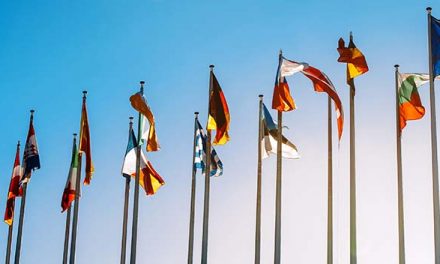Building a Culture Centered on Diversity, Equity and Inclusion in the Automotive Industry
SOURCE: Jabil Blog
The automotive industry is typically described as an industry created by men, for men. But this is not reflective of the world we live in today. Women make up about half of the U.S. labor force, but they only comprise 25% of the auto manufacturing workforce, according to the 2022 survey “Women at the Wheel” fielded by Deloitte and Automotive News.
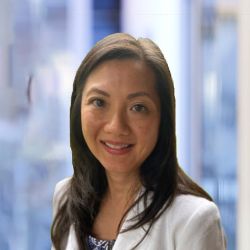
Helen Ly, Moderator
Across many other industries, businesses are comprised of a more diverse group of employees than ever before, including a higher percentage of women, underrepresented communities and individuals with disabilities. Creating an inclusive culture and safe working environment is vital for the health, productivity and success of an organization and its employees.
Establishing this environment, though, is not as simple as it may sound, especially for legacy industries like automotive. It requires trust and respect, transparent communication, and a drive for continuous improvement.
In the fall of 2021, Jabil hosted a panel of experts in a roundtable discussion to explore best practices for creating a more diverse, equitable and inclusive environment in the automotive sector.
Panelists:
- Cheryl Thompson, Founder, Center for Automotive Diversity, Inclusion & Advancement (CADIA)
- LaShawne Meriwether, Senior Vice President, Human Resources, Jabil
- Chad Morley, Senior Vice President, Global Business Units, Automotive and Transportation, Jabil
Moderator:
- Helen Ly, Human Resources Director, Jabil
Defining Diversity, Equity and Inclusion
Helen: The words diversity, equity and inclusion (DEI) can have many meanings. It is important for companies to define each DEI term so there is no confusion or misunderstanding of what is expected of employees. In your own words, how do you define these terms?
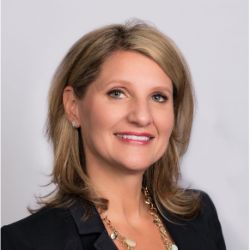
Cheryl Thompson
Cheryl: I define diversity as all the things that are visible and invisible that make us different. Most people think of gender, race, ethnicity and sexual orientation when they hear the word diversity. But it’s so much more. It can include age, parental status, family status, and religious or spiritual beliefs. It could be your political views. It could be your educational background. Equity is about giving people what they need to succeed in our industry. We need to evolve that thinking because not everybody has the same needs. Not everybody has the same access. Then inclusion is being able to leverage all those differences.
LaShawne: I couldn’t agree more with Cheryl. It’s really important to include the things that are seen and not seen. That can evolve as new generations and people from different backgrounds think about these differences and observe things even differently than we do today.
Chad: When talking about equity, it’s about creating a workplace or environment that’s fair to everyone. It’s where people have opportunity to achieve the same outcome in the end. We can consider the upbringing others have but we need to understand that supplementing or supporting our colleagues can be done in different ways. This allows us to create the same fair opportunities or outcomes for all our colleagues.
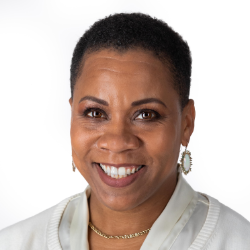
LaShawne Meriwether
LaShawne: Agreed, Chad. To me, equity refers to the availability of systems and processes. I believe that being intentional around systems and processes to support the ability for all people to maximize their potential in a workplace is vital to drive change. From an inclusion perspective, we have begun to talk a lot about psychological safety. When I talk about inclusion, I think about teams and leaders who demonstrate positive behaviors.
Chad: One step is to create a space that is safe for everyone. That allows people to come to work and be their true selves. It is up to companies to create this atmosphere where people feel there is a trusted and safe place. It’s critical for leaders to understand that. We need to create that environment within our own teams.
The Current State of Diversity, Equity and Inclusion in the Automotive Industry
Helen: Let’s get a little more specific about the automotive industry. What is the auto industry now doing within the DEI space? We have seen some powerful statistics CADIA has released with regards to the benefits that companies see with diversity, equity and inclusion. For example, companies are eight times more likely to achieve better business outcomes. In addition, there’s an additional 1% increase in revenue for every 10% increase in the 50/50 disparity for gender. Cheryl, can you provide some context for the statistics that CADIA has uncovered?
Cheryl: The automotive industry is evolving right now. With the push for electric vehicles, we’re seeing more change than we have since the auto industry started. Having autonomous vehicles, shared services and mobility is a huge change in the industry. It is forcing us to be more creative while simultaneously being more inclusive with our talent. This is all happening while demographics are shifting.
Approximately 50% of the population under the age of 18 living in the U.S. within the last two or three years came from a minority race or ethnic group. The automotive industry is so much more aware of that dynamic now. We’re all in this war for talent, so this awareness is important.
Let’s consider the example of using crash test dummies in the automotive sector. They’re still mainly made as men-sized crash dummies — which isn’t representative of the diversity of people who drive cars. When facial recognition software technology was first developed, it provided accurate data 99% of the time for white men. But for women of color, it’s only correct two out of every three times. It shows that when we don’t have the right people at the table making the decisions, contributing to technology developments, we’re missing out.
Challenges do remain. Let’s face it, 20 to 25 years ago, this industry had quotas and we’re still feeling the backlash or the effects of that from some employees thinking we are just trying to promote women and underrepresented talent. And in their mind that means white men aren’t going to get career opportunities anymore, and that’s not the goal of DEI. We need everyone. We need to include everyone.
LaShawne: Cheryl, I have heard you call this a “zero-sum” mentality. I’ve had some recent groups where we conducted DEI training, and what we hear is, “Why do we need to attend?” Or, “Did we do something bad?” But that’s not the point. There’s this beautiful outcome that can happen when we truly have teams that are diverse and inclusive. We believe that the outcomes for our business and for all the people who are in the team are going to be enhanced and improved.
Helen: So, moving on to how these changes are being driven. Can you share a little bit more of what DEI initiatives you’re involved with? What are each of you rolling out, and how can these practices be sustained?
LaShawne: At Jabil, we first established some enterprise priorities. But it can’t just be top-down action. It must also be a bottom-up approach so that employees at different levels are involved. Establishing enterprise priorities and developing a detailed plan can help, but it is not enough for an organization of our size. As a result, we created some diverse priorities like talent development.
We talk about inclusive leadership and mitigating bias as needing to be emphasized at both the enterprise level and the site level or across our segments and businesses. We would like for everyone to be focused on how to enable those priorities and how to drive them. Then it is important to offer training, so our employees are constantly learning.
Cheryl: The great news is that many more leaders are getting involved, like Chad. It’s not just something we can sit back and let human resources lead alone. HR is certainly an important seat at the table, but I’m also seeing business leaders stepping up. They are taking ownership of diversity, equity and inclusion because they see the benefit. Their involvement makes it more sustainable.
CADIA has established a 13-Week Accelerator Program so that we can give people the skills, confidence and competence to comfortably talk about DEI. Many may think DEI needs to be top down. Other people say it should be grassroots. I like to think about it like the sandwich approach — both top down and bottom up.
LaShawne: These efforts need to be managed at a local or department level as well. There are certain questions that we as an organization need to ask. What is being done to attract employees who have disabilities? What can be done to attract women? What can be done to attract underrepresented communities? From there we look at the development programs that should be established.
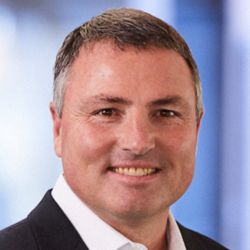
Chad Morley
Chad: That’s so important for staffing and for us to continue to grow as a company. Being representative of our communities shows we are not just talking about DEI but also putting it into practice. LaShawne mentioned unconscious bias training. For me personally, I think this was one of the most significant activities that opened my eyes. Our entire management team within the Automotive & Transportation division was trained on unconscious bias. Without that knowledge it’s difficult for leaders to understand how to change the environment for the better.
LaShawne: I think Chad understates the work he has done with his team. They have benefited from the partnership with CADIA and everything Cheryl and her team provide. But Chad also takes DEI into consideration when establishing performance goals. His team was very deliberate about having a DEI-related component to employee performance. We will all see the benefits. Teams that are more inclusive are going to attract the talent.
Making Progress in Diversity, Equity and Inclusion Goals
Helen: As companies drive change, they need to understand where they are starting from. What’s the baseline? Chad, it sounds like your team has progressed quite a bit from where you started. That’s important and you’ve mentioned the work is certainly not done. But you’ve seen significant progression.
Chad: Thank you, Helen. It is a team effort. We know that younger generations have different expectations, not only in DEI but for the workforce in general. And I think it’s important that we clearly understand what those expectations are. And how we can not only meet the expectations but extend past them.
Cheryl: Another idea we have been successful with is executive listening tours with a group of panelists from different demographic groups. A moderator is included who asks questions of the group. The moderator draws out the lived experiences, obstacles and barriers. The executive’s role is simply to listen. She or he can ask clarifying questions, but their role is not trying to solve anything or to be defensive. The goal is to understand things from a different perspective, and to consider what systemic changes may be required.
LaShawne: Our CEO at Jabil has created a DEI Council. That’s been great because it’s a two-year commitment, and all members of the council have their own unique passions and priorities. We’ve created an agenda of topics that is not overly weighted to certain things that may seem more important to others. So that healthy tension, even amongst our DEI Council, has been great to see.
We’re in the middle of what we would call our mid-year review process. What is interesting is the language that’s used for women employees in these reviews is very different from men. And now we’re openly talking about that. It’s another example of how we need to be as inclusive as we can possibly be in all aspects.
Helen: A lot of times when we talk about DEI, we think about very broad, very big action items. I’ve spoken with LaShawne, and we know that there’s opportunity for improvement with how we review resumes and the types of interview questions that we ask. We need to challenge ourselves on our approach. For example, what’s the impact of having an interview panel of all men for a woman candidate?
Our HR team has been in the habit of starting every internal meeting talking about safety. But now we are starting meetings by asking, where we are with gender diversity? It’s important to leverage the processes that we have in place and then show some data points when it comes to diversity before we move into talent discussions.
Helen: In summary, what’s one message about driving advancements in DEI that you would like to leave everyone with?
Cheryl: My message would be, stay curious. Everything that we’ve been talking about today requires a certain level of curiosity. And when we talk about developing leaders at all levels, I often hear, “I can’t find women,” or, “I can’t find diverse talent,” or, “They’re not ready for these roles yet.” We hear that they need more development, or they don’t want these roles. But that perception is usually wrong. I think we need to remain curious. If the colleagues I had worked for in the past weren’t curious and gave me opportunities, I wouldn’t be here. Getting these opportunities has changed my world.
Helen: That’s great to hear, Cheryl. We are considering ways to create more opportunities for women in leadership that I get to participate in. We’ve looked at the data and, in some areas, we have seen a decrease in women being added to leadership positions. So, what we started doing was interviewing women and executives as to why. But any given job may not be desirable to men either. Maybe it’s because of the hours or traveling too much. It’s not about women or people from a specific background but the job itself. We need to have the job structured in a way that it’s attractive to anyone.
LaShawne: I love the message to stay curious. That was a word that had occurred to me as well when we were talking earlier. I’ll use a different word and suggest we all stay courageous — having the courage to have difficult discussions, the courage to be an advocate, the courage to be an ally, the courage to be curious. That’s the message that I would give. Everyone can bring a sense of courage to whatever role they have in an organization.
Chad: I’ll stay with the one word as well. I suggest people stay involved. When I became engaged through an allyship partnership with one of my woman leaders, it really started to open my eyes. I think that awareness helped, and over time all the topics she and I have discussed really helped me to internalize these issues. We’ve asked ourselves which of these actions are sustainable. We must put the proper structure and processes in place, and I think we have started that and continue to do that.
Lastly, we all have an opportunity to create a safe space for people. In doing that we will continue to learn and evolve. We can never stop finding new ways to improve in this space.
Taking the DEI Journey
We believe that everyone is responsible for supporting advancements in diversity, equity and inclusion. At Jabil, our commitment to diversity, equity and inclusion empowers each person to come to work as their whole self. Meanwhile, the team at CADIA is working to increase the diversity of leadership within the automotive industry. Every organization’s journey to diversity, equity and inclusion looks different, but they are all necessary to creating a safer, more welcoming world for everyone.





